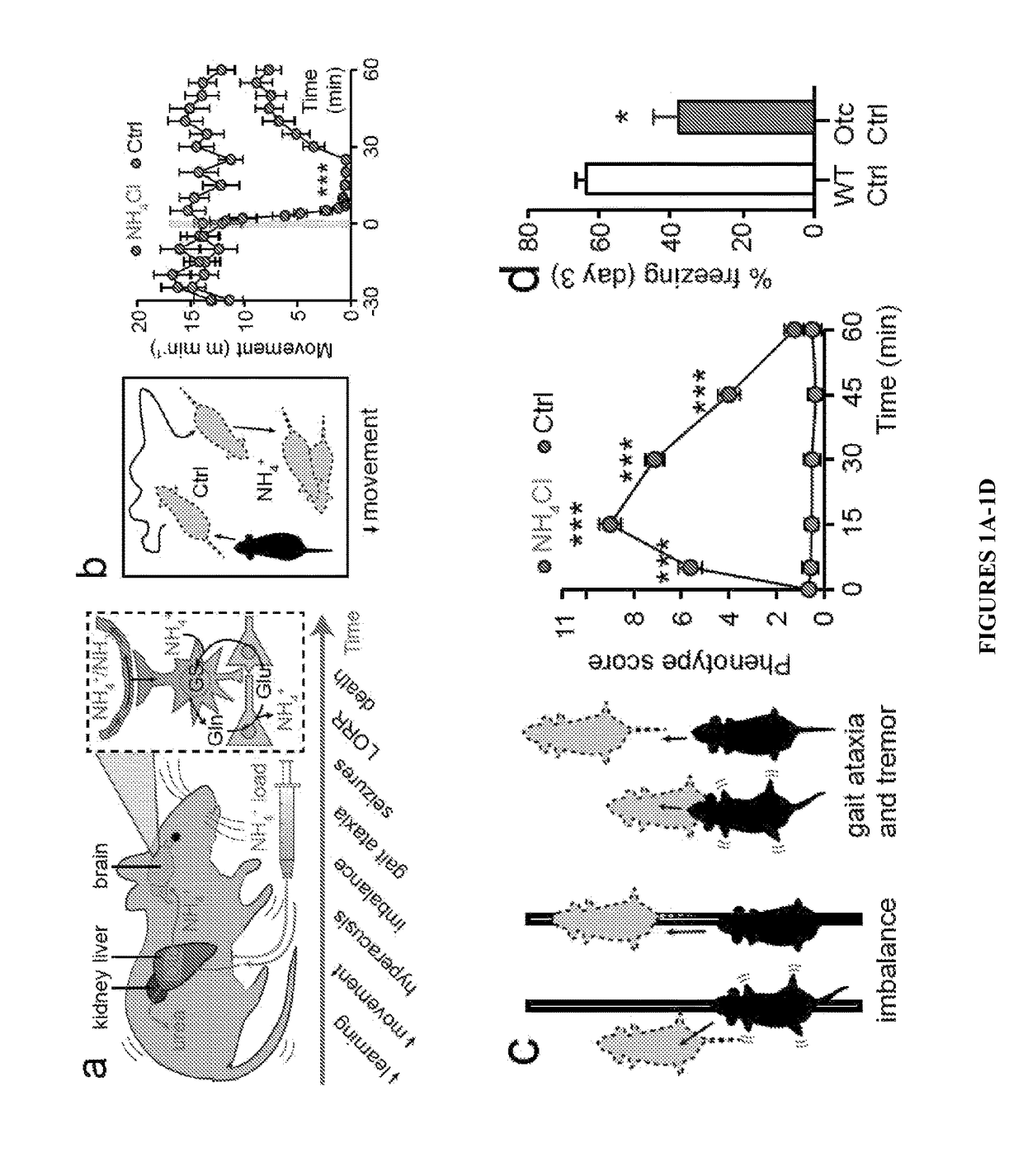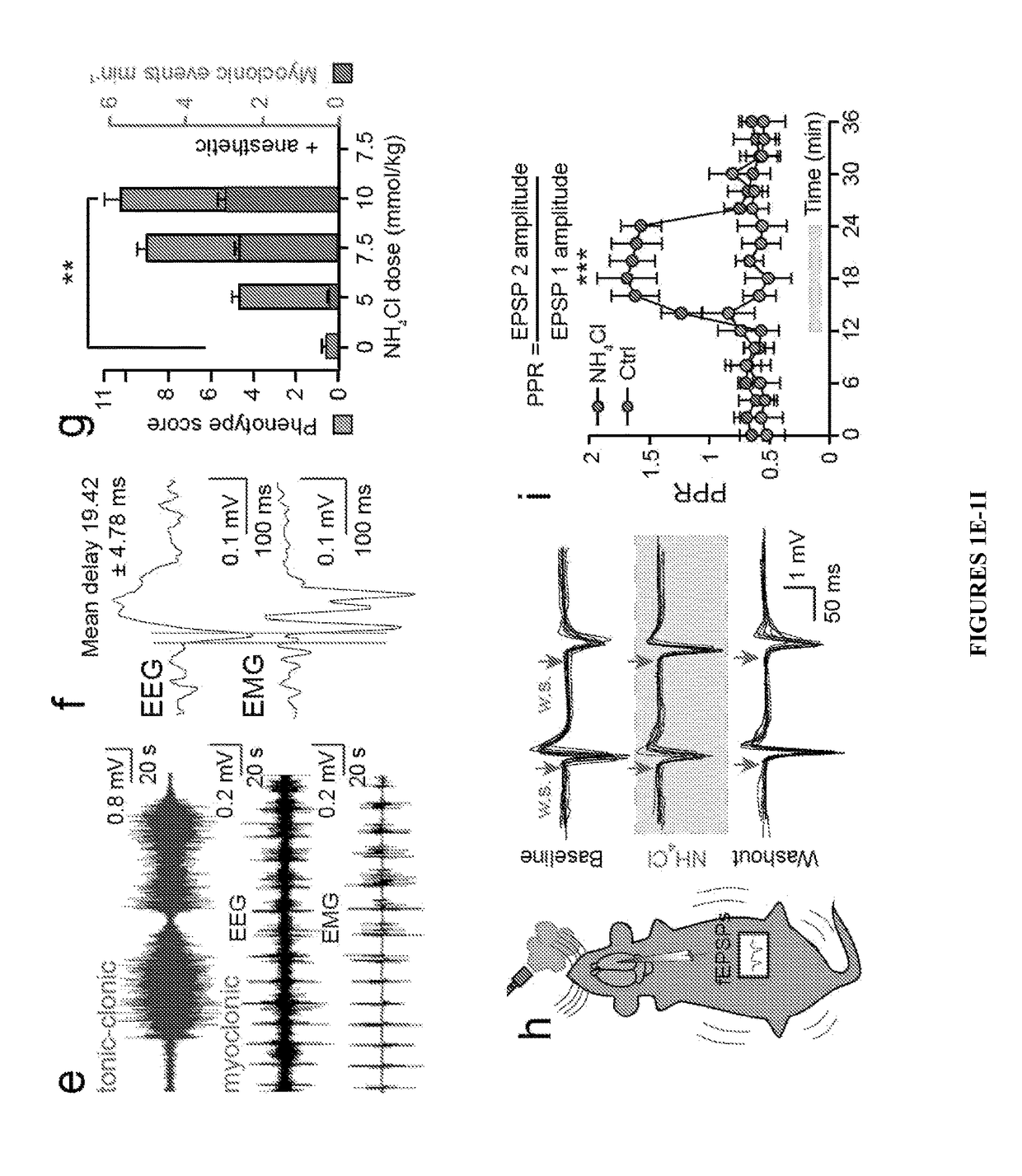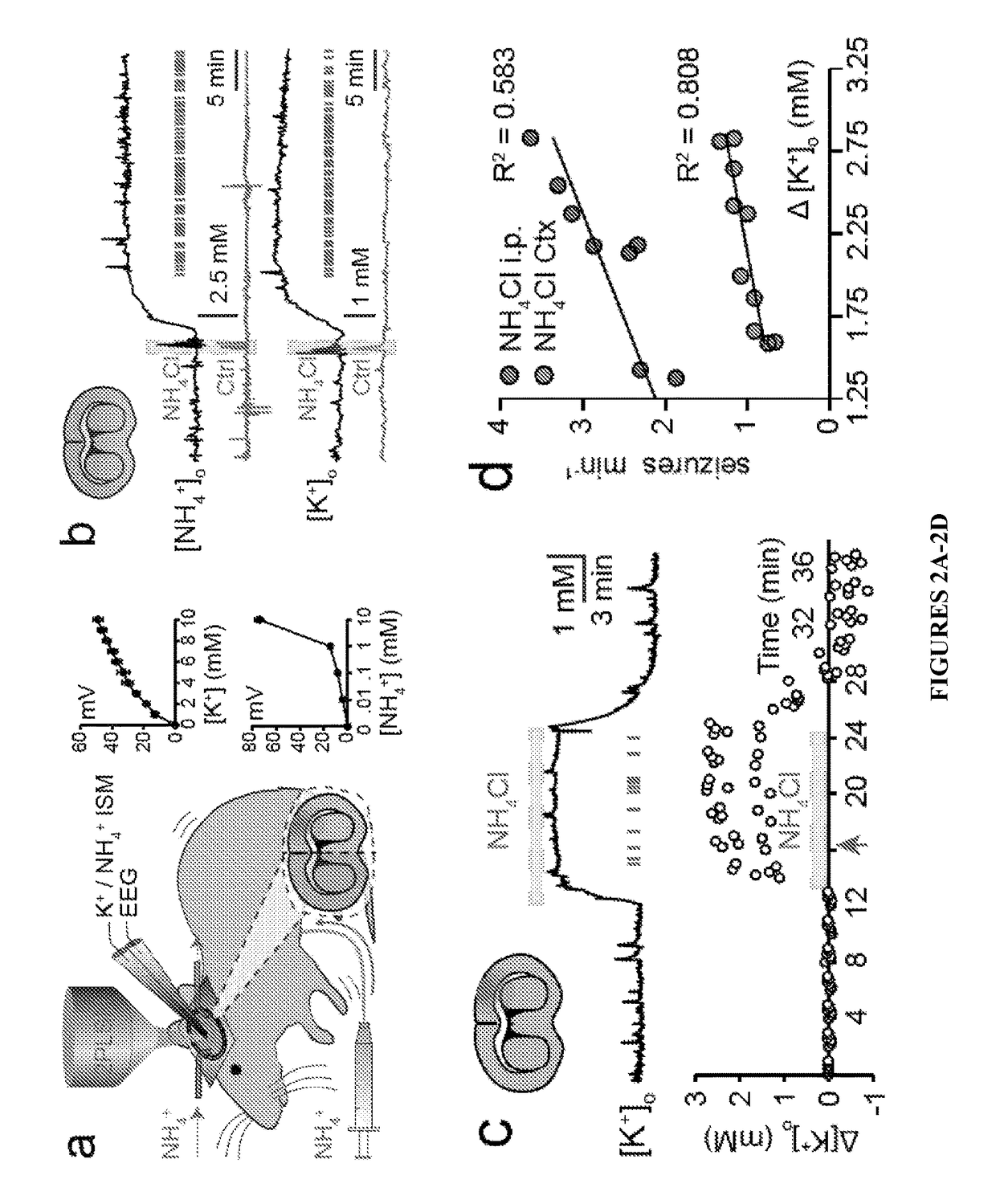Method of treating and preventing brain impairment using Na+-K+-2Cl-cotransporter isoform 1 inhibitors
a cotransporter isoform and brain impairment technology, applied in the direction of drug compositions, heterocyclic compound active ingredients, amide active ingredients, etc., can solve the problems of increasing extracellular potassium, achieve favorable side effects, restore inhibitory transmission, and accelerate neuronal inhibition.
- Summary
- Abstract
- Description
- Claims
- Application Information
AI Technical Summary
Benefits of technology
Problems solved by technology
Method used
Image
Examples
example 1
and Methods
[0066]Rodent Breeding and Behavioral Studies—All animal experiments were approved by the Animal Care and Use Committee of the University of Rochester. Otcspf-ash B6 C3-F1 mice and wild-type littermates were bred as described previously (see Ye et al. “Adenovirus-Mediated In Vivo Gene Transfer Rapidly Protects Ornithine Transcarbamylase-Deficient Mice From an Ammonium Challenge,”Pediatr. Res. 41:527-535 (1997), which is hereby incorporated by reference in its entirety). Aqp4− / − mice and wild-type littermates were generated as described previously (Thrane et al., “Critical Role of Aquaporin-4 (AQP4) in Astrocytic Ca2+ Signaling Events Elicited by Cerebral Edema,”Proc. Natl. Acad. Sci. U.S.A. 108:846-851 (2010), which is hereby incorporated by reference in its entirety). Cortical slices were prepared from P21-30 C57BL / 6J mice as outlined previously (Thrane et al., “Critical Role of Aquaporin-4 (AQP4) in Astrocytic Ca2+ Signaling Events Elicited by Cerebral Edema,”Proc. Natl....
example 3
onia Exposure Causes a Robust Seizure Phenotype
[0080]In addition to cognitive, sensory, and motor impairment, children with OTC deficiency typically develop seizures during episodes of hyperammonemia (Cagnon et al., “Hyperammonemia-Induced Toxicity for the Developing Central Nervous System,”Brain Res. Rev. 56:183-197 (2007); Rowe et al., “Natural History of Symptomatic Partial Ornithine Transcarbamylase Deficiency,”New Eng. J. Med. 314:541-547 (1986), which are hereby incorporated by reference in their entirety). Around weaning Otcspf-ash mice also developed spontaneous myoclonuses, which are brief (,” Ann. Neurol. 72(2):175-83 (2012); DeSalvo et al., “Focal BOLD fMRI Changes in Bicuculline-Induced Tonic-Clonic Seizures in the Rat,”Neurolmage 50:902-909 (2010), which are hereby incorporated by reference in their entirety). An ammonia challenge was used to precipitate the seizure phenotype and it was found that intermediate doses (7.5 mmol kg−1) triggered numerous myoclonic events, w...
example 4
Ammonia Toxicity Causes Disinhibition of Neuronal Firing
[0081]To explore whether cortical ammonia toxicity alone is sufficient to generate neurological dysfunction, ammonia was applied directly on the cortex of awake mice. Cortical application of 10 mM NH4Cl caused a 5.82±0.18 mM increase in [NH4+]o and reproduced the seizure phenotype of systemic ammonia toxicity (FIGS. 5H, 5J and Table 1, infra). In Table 1, NH4+ and K+ ISMS recordings from cortex of awake Otcspf-ash mice are shown. Data are shown as mean±SEM.
[0082]
TABLE 1Bumetanide Treatment Does Not Affect Cortical Ammonia or Potassium ConcentrationsP valueP value[NH4+]onMann-WhitneyΔ[K+]onMann-Whitney(mM)(animals)U test(mM)(animals)U testCORTICAL SUPERFUSIONControl0.45 ± 0.1760.0058 ± 0.0196BUM0.52 ± 0.1160.590.0025 ± 0.01860.94NH4Cl5.82 ± 0.186 2.24 ± 0.1710NH4Cl +5.78 ± 0.1360.87 2.17 ± 0.1290.66BUMINTRAPERITONEAL INJECTIONControl0.48 ± 0.1260.015 ± 0.0259BUM0.42 ± 0.1660.390.0073 ± 0.015 60.53NH4Cl4.83 ± 0.5271.93 ± 0.1910NH...
PUM
| Property | Measurement | Unit |
|---|---|---|
| Depth | aaaaa | aaaaa |
| period of time | aaaaa | aaaaa |
| period of time | aaaaa | aaaaa |
Abstract
Description
Claims
Application Information
 Login to View More
Login to View More - R&D
- Intellectual Property
- Life Sciences
- Materials
- Tech Scout
- Unparalleled Data Quality
- Higher Quality Content
- 60% Fewer Hallucinations
Browse by: Latest US Patents, China's latest patents, Technical Efficacy Thesaurus, Application Domain, Technology Topic, Popular Technical Reports.
© 2025 PatSnap. All rights reserved.Legal|Privacy policy|Modern Slavery Act Transparency Statement|Sitemap|About US| Contact US: help@patsnap.com



